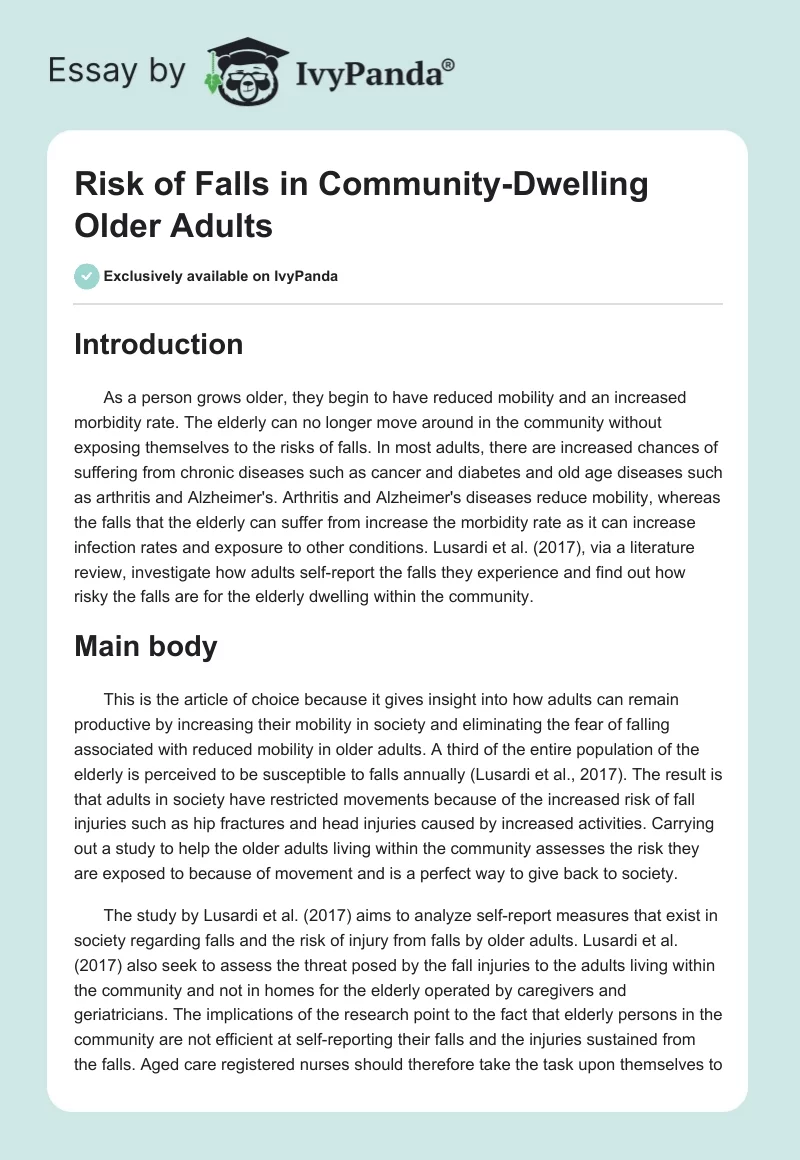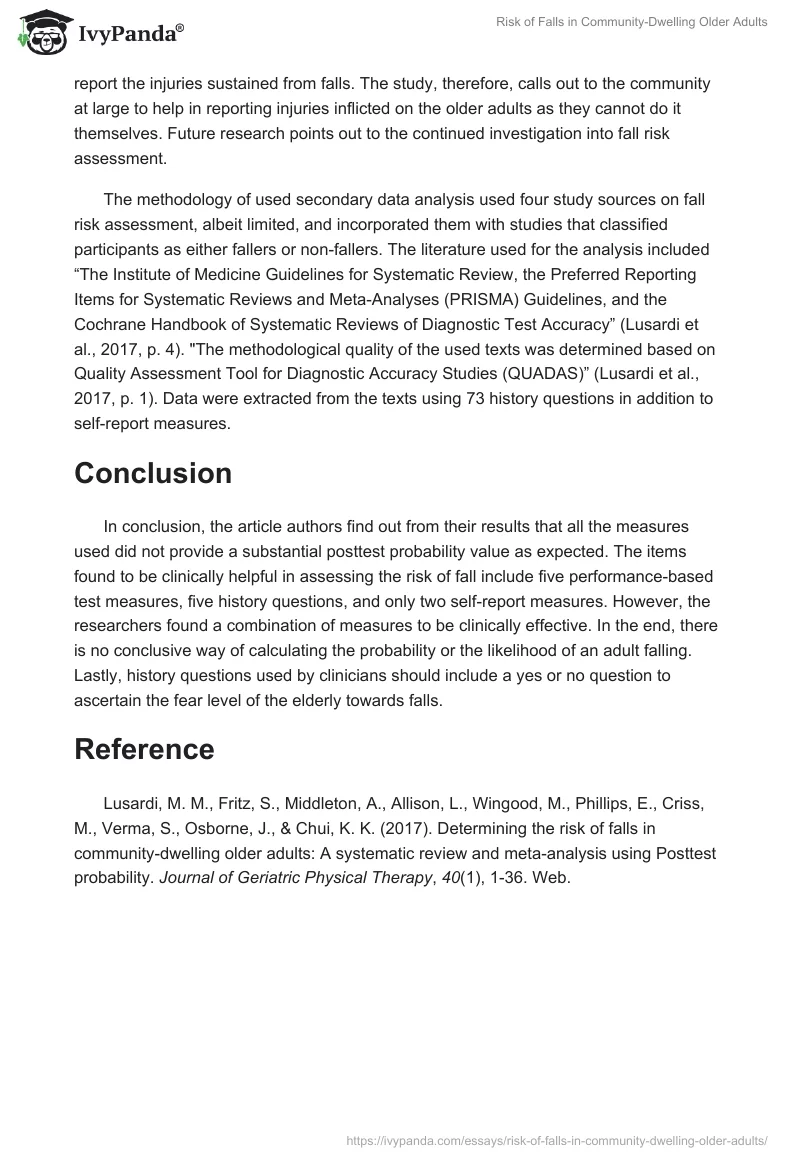Introduction
As a person grows older, they begin to have reduced mobility and an increased morbidity rate. The elderly can no longer move around in the community without exposing themselves to the risks of falls. In most adults, there are increased chances of suffering from chronic diseases such as cancer and diabetes and old age diseases such as arthritis and Alzheimer’s. Arthritis and Alzheimer’s diseases reduce mobility, whereas the falls that the elderly can suffer from increase the morbidity rate as it can increase infection rates and exposure to other conditions. Lusardi et al. (2017), via a literature review, investigate how adults self-report the falls they experience and find out how risky the falls are for the elderly dwelling within the community.
Main body
This is the article of choice because it gives insight into how adults can remain productive by increasing their mobility in society and eliminating the fear of falling associated with reduced mobility in older adults. A third of the entire population of the elderly is perceived to be susceptible to falls annually (Lusardi et al., 2017). The result is that adults in society have restricted movements because of the increased risk of fall injuries such as hip fractures and head injuries caused by increased activities. Carrying out a study to help the older adults living within the community assesses the risk they are exposed to because of movement and is a perfect way to give back to society.
The study by Lusardi et al. (2017) aims to analyze self-report measures that exist in society regarding falls and the risk of injury from falls by older adults. Lusardi et al. (2017) also seek to assess the threat posed by the fall injuries to the adults living within the community and not in homes for the elderly operated by caregivers and geriatricians. The implications of the research point to the fact that elderly persons in the community are not efficient at self-reporting their falls and the injuries sustained from the falls. Aged care registered nurses should therefore take the task upon themselves to report the injuries sustained from falls. The study, therefore, calls out to the community at large to help in reporting injuries inflicted on the older adults as they cannot do it themselves. Future research points out to the continued investigation into fall risk assessment.
The methodology of used secondary data analysis used four study sources on fall risk assessment, albeit limited, and incorporated them with studies that classified participants as either fallers or non-fallers. The literature used for the analysis included “The Institute of Medicine Guidelines for Systematic Review, the Preferred Reporting Items for Systematic Reviews and Meta-Analyses (PRISMA) Guidelines, and the Cochrane Handbook of Systematic Reviews of Diagnostic Test Accuracy” (Lusardi et al., 2017, p. 4). “The methodological quality of the used texts was determined based on Quality Assessment Tool for Diagnostic Accuracy Studies (QUADAS)” (Lusardi et al., 2017, p. 1). Data were extracted from the texts using 73 history questions in addition to self-report measures.
Conclusion
In conclusion, the article authors find out from their results that all the measures used did not provide a substantial posttest probability value as expected. The items found to be clinically helpful in assessing the risk of fall include five performance-based test measures, five history questions, and only two self-report measures. However, the researchers found a combination of measures to be clinically effective. In the end, there is no conclusive way of calculating the probability or the likelihood of an adult falling. Lastly, history questions used by clinicians should include a yes or no question to ascertain the fear level of the elderly towards falls.
Reference
Lusardi, M. M., Fritz, S., Middleton, A., Allison, L., Wingood, M., Phillips, E., Criss, M., Verma, S., Osborne, J., & Chui, K. K. (2017). Determining the risk of falls in community-dwelling older adults: A systematic review and meta-analysis using Posttest probability. Journal of Geriatric Physical Therapy, 40(1), 1-36. Web.


